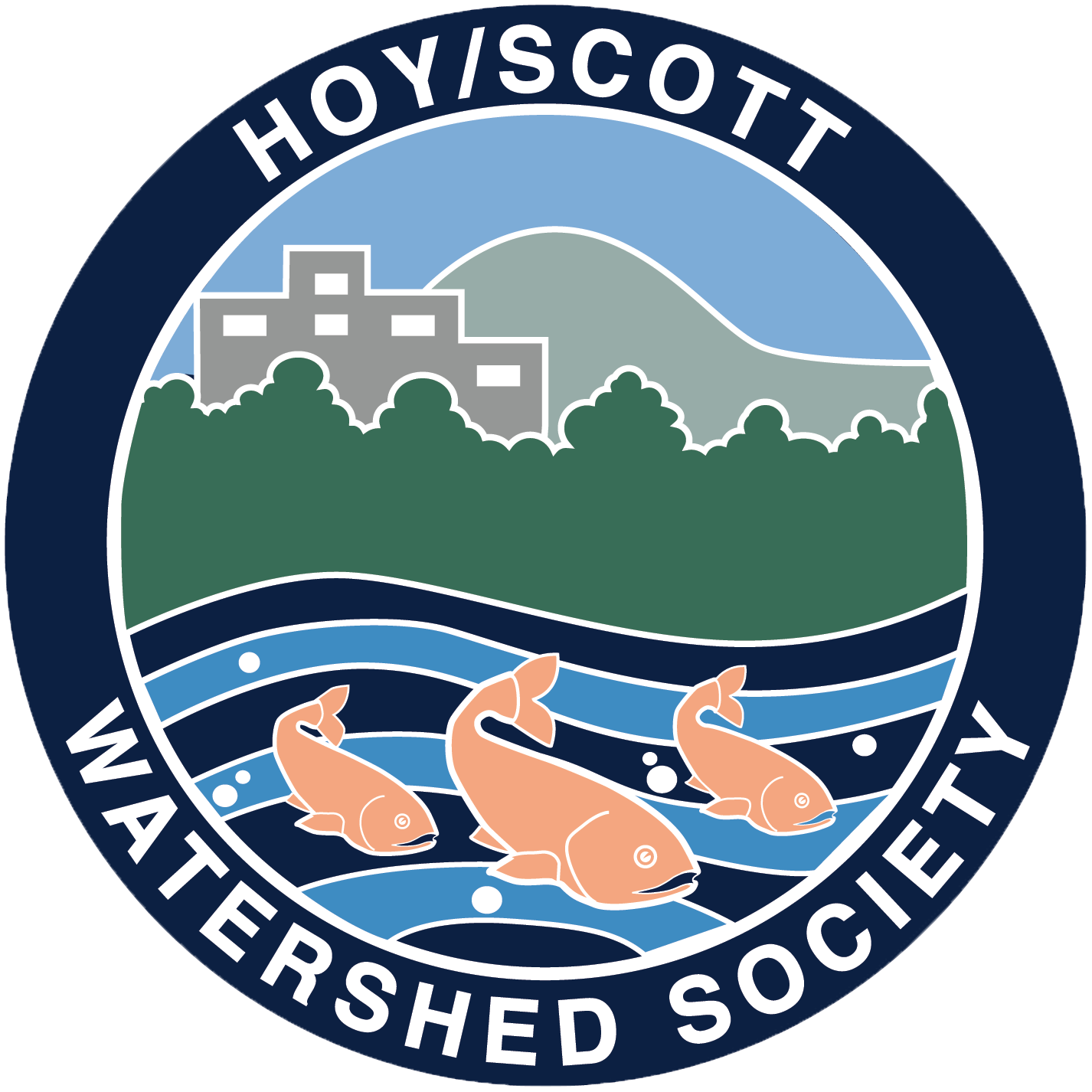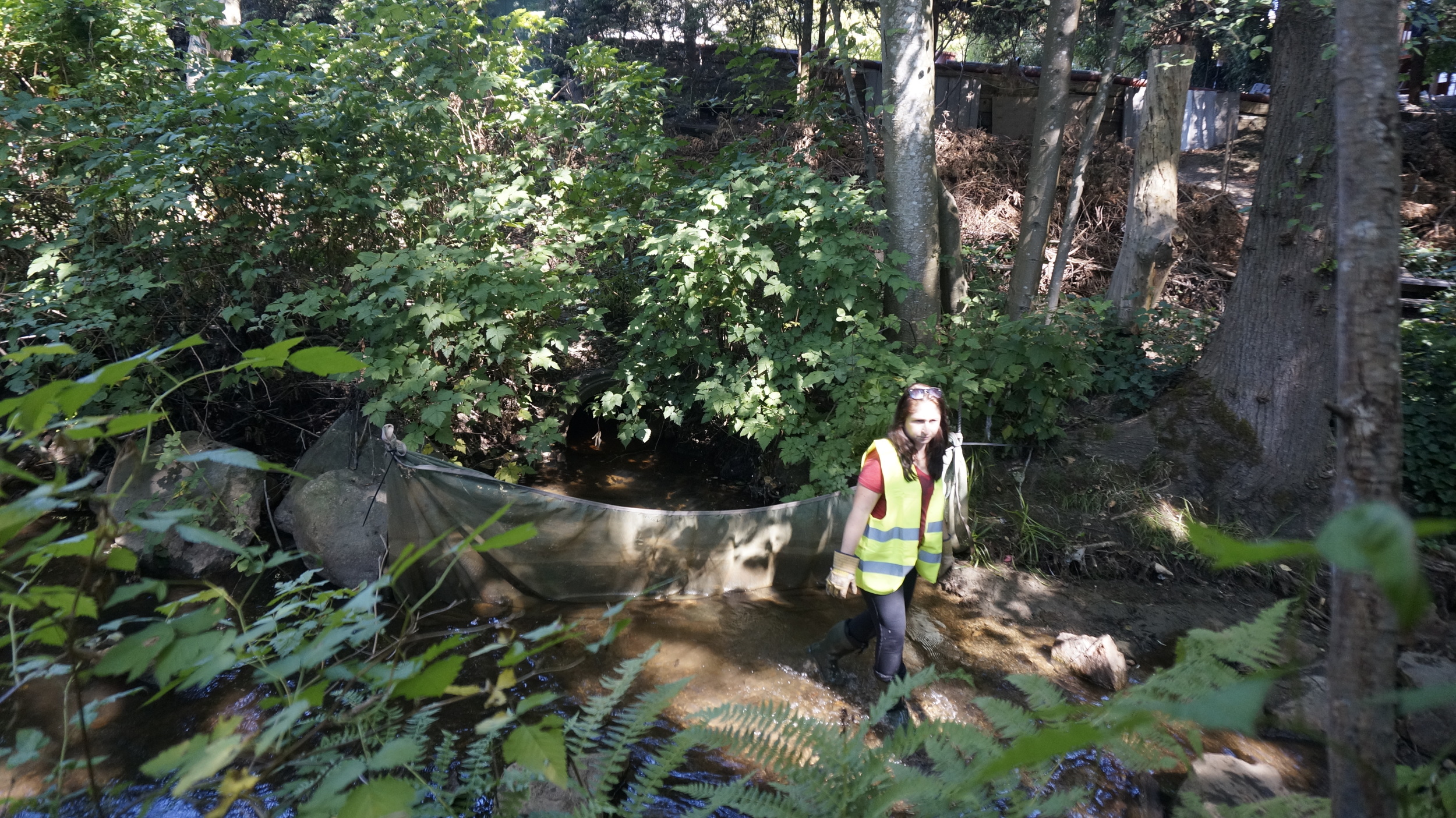Hoy Creek on September 11th, 2015 at 3:30pm (Photo: Robbin Whachell)
A similar spill to that in August was reported to the City on September 11th.
Hoy-Scott Watershed Society was notified by the City of Coquitlam and were advised that at approximately 1:45 p.m. a resident reported a white milky substance in Hoy Creek visible along Guildford Way.
The City began immediate investigation and said they had narrowed the source area to between the Hatchery and Pinewood Avenue. A director of Hoy-Scott Watershed Society took the photos seen here at 3:30 pm.
We were later advised that a member from Environmental Services Division (ESD) walked a large section of the creek between Guildford and Pinewood, all inspected areas were cloudy/turbid. The fire department confirmed that the turbid water entered the channel below Pinewood Ave. The water appeared to be clearing when ESD was on site around 2:30 pm.
The City's Drainage Department inspected the 4-5 outfalls around Walton, Pinewood Ave and White Pine Pl. We were told that the water was all pretty clear and they could not identify which outfall the cloudy/turbid water originated from. Drainage also drove around some of the neighbourhoods in the catchment area looking for evidence of material being dumped into a catch basin but did not find anything suspicious. The spill was also reported to the Ministry of Environment.
Unfortunately the source was never found.
The rearing pond at Hoy Creek Hatchery, 3:30 pm, September 11, 2015 (Photo: Robbin Whachell)
See more photos on our Facebook page













